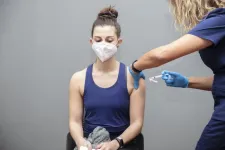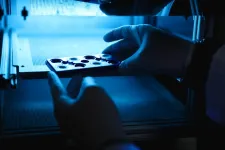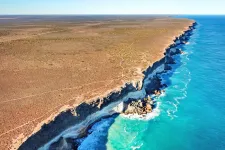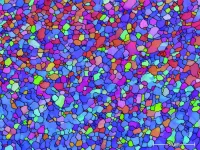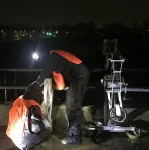(Press-News.org) In the wake of the 2020-2021 Southwest Puerto Rico earthquake sequence, researchers asked emergency responders and residents in affected communities about the information they needed to prepare for the next earthquake.
Residents surveyed door to door and in focus groups said they wanted to know more about and have easier access to an aftershock forecast, along with information on potential tsunami risk, according to a presentation at the SSA 2023 Annual Meeting.
Residents also wanted more information tailored specifically to their local area, said Jenniffer M. Santos-Hernández of the University of Puerto Rico, Río Piedras, who led the research team.
Santos-Hernández said there is a perception among some emergency responders and seismologists “that sharing the probability of another earthquake can cause panic, but disaster research says that panic is a very rare occurrence.”
“This keeps [them] from disseminating aftershock forecasts,” she added, “but that’s precisely the information that people are seeking.”
One of the participants in the study said of a visualization of an aftershock forecast “that looking at this gives me peace,” Santos-Hernández noted.
The research also revealed than only 1%of those surveyed were aware of aftershock forecast products generated by the U.S. Geological Survey, “even though that was what they wanted to know,” she said.
Residents also wanted to have tsunami risk maps in the wake of earthquakes, “something possible through better interagency collaboration with the National Oceanic and Atmospheric Administration (NOAA)” Santos-Hernández noted.
The research team began work in 2020 to get local feedback on risk communication products produced by the USGS’ Earthquake Science Center and aftershock teams.
“We want to transition to a culture of preparedness, and they are the ones who can tell us more on how to do that because they’ve been doing it,” Santos-Hernández said of communities in the municipalities of Guayanilla, Guánica, and San Juan.
Santos-Hernández and her colleagues show prototype risk communication products to residents “so they can provide us feedback on what specific changes they want on these visualizations,” she said. This feedback helps USGS refine its communication products.
The researchers have learned more about how the people affected by the 2020-2021 earthquake sequence behaved during the earthquakes. For instance, many of those surveyed knew about the need to keep a flashlight on hand for emergencies, but they told the researchers they thought the advice should be to keep the flashlight close at hand by the bed.
Some of those surveyed said their plan was to evacuate a structure during an earthquake “but in community meetings, residents who were dealing directly with the earthquake, also said, ‘thank God I couldn’t move, because if I had tried to move, the staircase of my house collapsed,’” Santos-Hernández shared. “Contrasting the intentions with what people actually did is important to promote preparedness and overall safety.”
Too often residents in Southwest Puerto Rico are left out of earthquake resilience research and preparedness programs, she noted.
“What really was very eye-opening in the research was that their experience was dramatically different from that of other people [in Puerto Rico],” Santos-Hernández said. “Ultimately because we are not paying much attention to the area, we’re undermining earthquake risk. We are really losing the opportunity for learning, planning, and building capacity.”
The research has also highlighted the important role of scientists in risk communication, she said. “What we’re learning is that when the scientist engages in risk communication, people are actually listening, and they take actions based on what that scientist is saying.”
The survey showed “that people are more likely to do something if they learn about the possibility of a stronger earthquake from a scientist,” said Santos-Hernández.
In the case of the 2020-2021 earthquakes, she noted, some residents were more likely to structurally reinforce their homes and businesses after hearing about future earthquake risks from a scientist.
END
Surveys, focus groups reveal what Puerto Rico residents want to know after 2020-21 earthquakes
2023-04-18
ELSE PRESS RELEASES FROM THIS DATE:
Severe COVID-19 linked with 16-fold risk of life-threatening heart rhythm within 6 months
2023-04-18
Barcelona, Spain – 18 April 2023: Patients with severe COVID-19 requiring mechanical ventilation are 16 times more likely to develop ventricular tachycardia within six months compared to their peers without severe infection, according to research presented at EHRA 2023, a scientific congress of the European Society of Cardiology (ESC).1 Risks of other heart rhythm disorders were also elevated.
“The actual likelihood of developing ventricular tachycardia or other arrhythmias after severe COVID-19 is low for the individual ...
Stereotactic radiosurgery is effective for treatment of vestibular schwannomas in neurofibromatosis type 2
2023-04-18
April 18, 2023 –Vestibular schwannomas related to neurofibromatosis type 2 (NF2) are difficult to manage and are sometimes treated with a noninvasive option, stereotactic radiosurgery. A retrospective study conducted by an international, multicenter team found that stereotactic radiosurgery is effective for patients with these tumors while preserving serviceable hearing and not causing radiation-related tumor development or malignant transformation. These results are reported in the May issue of the Congress of ...
Global study first to compare COVID-19 vaccine hesitancy among college students
2023-04-18
As the world enters a post-pandemic phase, an international study is providing unique perspectives on COVID-19 vaccine hesitancies among college students.
Researchers from Florida Atlantic University, Ariel University in Israel, and the University of West Bohemia in Pilsen, Czech Republic, are the first to perform a cross-cultural comparison to investigate factors that influenced the decision to get the COVID-19 vaccine in an international sample of college students from the United States, Israel and the Czech Republic.
The study explored associations between vaccine hesitancy and ...
New research may hold key to better treatments for aggressive brain cancer
2023-04-18
Southfield, Mich., April 18, 2023 – For decades, researchers have marveled at the ability of glioblastoma, a particularly aggressive brain cancer, to turn off a patient’s cancer-fighting immune cells, thereby allowing tumors to grow freely. This remains a primary reason why there are very few effective therapies available for this mostly fatal disease.
In a new study using more than 100 patient-derived glioblastoma tumors, Prakash Chinnaiyan, M.D., a physician scientist in the Department of Radiation Oncology at Corewell Health in Southeast, Mich., along with colleague and lead author Pravin Kesarwani, Ph.D., ...
3D printing breakthroughs to accelerate ocular drug delivery, biodegradable contact lenses & pharma research
2023-04-18
WATERLOO, Ontario, April 18, 2023—Scientists from the Centre for Ocular Research & Education (CORE) are poised to unveil multiple advancements in 3D printing next week during the ARVO 2023 Annual Meeting in New Orleans. These innovations have widespread applications, with the potential to accelerate development of drug delivery systems, biodegradable contact lenses, and pharmaceuticals.
“Our multidisciplinary team has created one of the most sophisticated 3D printing environments for ocular research in the world,” said Alex Hui, OD, PhD, FAAO, head of Biosciences at CORE. “This ...
Nullarbor rocks reveal Australia’s transformation from lush to dust
2023-04-18
Curtin researchers have discovered how long ago the Australian Nullarbor plain dried out, with a new approach shedding light on how ancient climate change altered some of the driest regions of our planet.
Iron-rich layers formed in ancient sediments were used to narrow down when an area dried out in response to changes in climate, such as the dramatic decline of groundwater in southern Australia.
These ‘relics of drying’ suggest the Nullarbor drastically shifted to dry conditions between 2.4 and 2.7 million years ago, uncovering how these environmental changes were key in shaping Australia’s diverse ...
Recycled aluminum offers energy, emissions and electric vehicle battery range savings
2023-04-18
RICHLAND, Wash.—Scrap aluminum can now be collected and transformed directly into new vehicle parts using an innovative process being developed by the automotive industry, in particular for electric vehicles. Today, the Department of Energy’s Pacific Northwest National Laboratory, in collaboration with leading mobility technology company Magna, unveils a new manufacturing process that reduces more than 50% of the embodied energy and more than 90% of the carbon dioxide emissions by eliminating the need to mine and refine the same amount of raw aluminum ore. ...
Keys to women’s resilience after 80: more education, less stress
2023-04-18
COLUMBUS, Ohio – Having a four-year college degree and a low level of stress are strongly linked to psychological resilience in American women aged 80 and older, a new study suggests.
Researchers analyzed data from the Women’s Health Initiative to identify factors that are associated with higher self-rated resilience – the ability to weather storms and rebound from setbacks – among almost 30,000 women with an average age of 84.
Other characteristics linked to higher resilience included stronger social support, higher self-rated health and a lower risk of depression than levels among women ...
Not such small things: Microplastics in our streams
2023-04-18
UC Riverside scientists are taking a modern approach to studying a murky subject — the quantity, quality, and sources of microplastics in Los Angeles County’s urban streams.
Microplastics are particles with a maximum diameter of 5 millimeters, roughly the size of a pencil eraser. The category can include nanoplastics, which are far smaller than the width of an average human hair.
Scientists have been aware that these particles have been filtering through the environment for decades, but concern about them has only started to ramp up more recently.
“There is mounting evidence that these materials are toxic,” said Andrew Gray, UCR assistant professor of ...
Researchers develop carbon-negative concrete
2023-04-18
PULLMAN, Wash. -- A viable formula for a carbon-negative, environmentally friendly concrete that is nearly as strong as regular concrete has been developed at Washington State University.
In a proof-of-concept work, the researchers infused regular cement with environmentally friendly biochar, a type of charcoal made from organic waste, that had been strengthened beforehand with concrete wastewater. The biochar was able to suck up to 23% of its weight in carbon dioxide from the air while still reaching a strength comparable to ordinary cement.
The research could significantly reduce carbon emissions of the concrete industry, which is one ...
